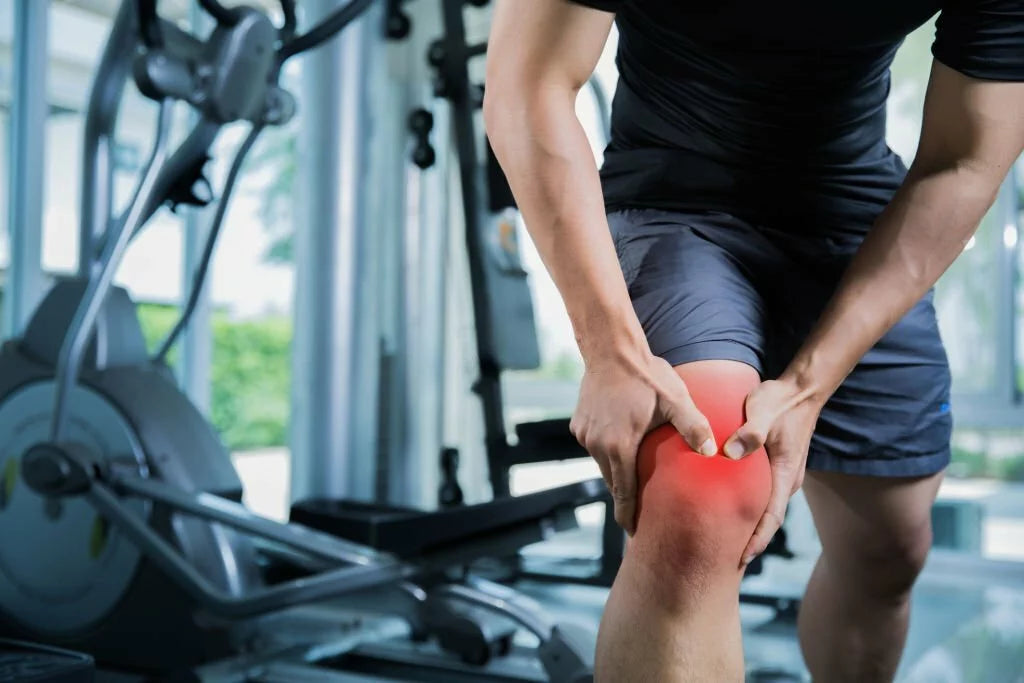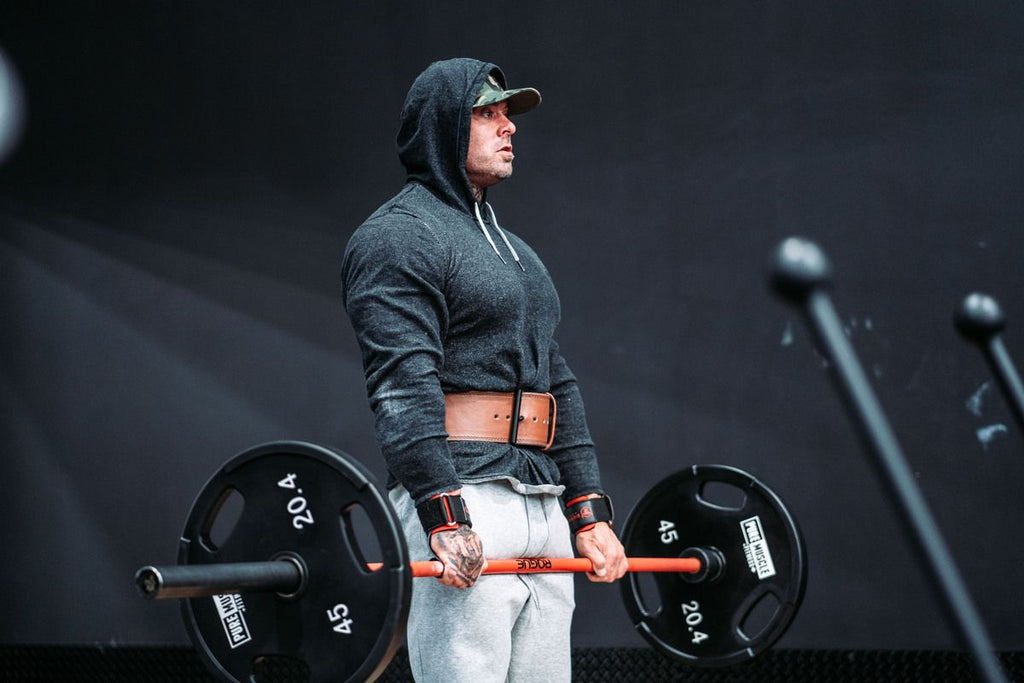Leg Extension Knee Pain: Causes, Prevention, and Prevention Tips

Leg extensions are a popular exercise for strengthening the quadriceps, but they’ve been a point of controversy due to their potential to cause knee pain. If you’ve ever experienced leg extension knee pain, or discomfort while using the leg extension machine, you’re not alone. Many fitness enthusiasts and strength trainers wonder whether leg extensions are harmful to the knees or simply misunderstood.

Let's break down how leg extensions can lead to knee pain, explain the exercise's biomechanics, and we'll review tips on safely adding it to your routine. Whether you're recovering from an injury or just looking to strengthen your legs, these insights will help you avoid knee problems.
Understanding Knee Pain During Leg Extensions
Knee pain during leg extensions often occurs due to the high stress placed on the patellofemoral joint. This joint, where your kneecap (patella) meets the thigh bone (femur), can experience significant force when performing open-chain exercises like leg extensions. In particular, the stress is highest when the knee is near full extension, typically from 30 to 0 degrees of flexion.
Biomechanically, the external moment arm—the distance from the knee joint to the load (the weight you're lifting)—increases as the knee approaches full extension. This requires greater force from the quadriceps to stabilize the knee, which, in turn, leads to increased compression of the patellofemoral joint. For individuals with pre-existing knee issues, such as patellar tendinitis or arthritis, this can exacerbate discomfort or cause flare-ups.
Common Causes of Knee Pain in Leg Extensions
The potential causes of knee pain while performing leg extensions are multifactorial.
Here are some of the most common culprits:
- Patellar maltracking: If your kneecap doesn’t glide smoothly along the femoral groove, excessive stress can accumulate in certain areas, leading to pain and inflammation.
- Weak quadriceps: If the quadriceps are underdeveloped, they may not be able to effectively manage the load placed on the knee joint, resulting in undue strain on the tendons and ligaments.
- Overloading too quickly: Progressive overload is a key principle in strength training, but ramping up the weight too fast during leg extensions can overwhelm the knee joint, leading to injury.
- Poor form: Improper foot positioning or rapid, jerky movements can increase the risk of knee pain. Keeping the movement controlled and ensuring proper alignment is crucial to preventing injury.
It’s important to listen to your body and stop the exercise if you experience sharp pain or discomfort. Long-term damage to the knee can result from ignoring these warning signs.
Is Leg Extension Harmful to the Knees?
The leg extension machine has often been labeled as harmful due to the increased joint stress mentioned above. However, research suggests that leg extensions, when performed correctly, are not inherently dangerous. In fact, studies have shown that the stress on the patellofemoral joint during leg extensions can be comparable to other common exercises, such as squats.
A study by Powers et al. (2014) demonstrated that patellofemoral stress is actually higher during squats in the 90 to 45-degree range of knee flexion compared to seated leg extensions.
This means that if knee pain is a concern, performing leg extensions in a controlled range, such as from 90 to 45 degrees of flexion, could be a safer option.
The key takeaway is that no exercise is inherently bad for the knees. What matters most is the context—your current knee health, exercise form, and how the leg extensions are integrated into your training program.
How to Perform Leg Extensions Safely
To avoid knee pain and get the most out of your leg extensions, follow these tips for proper form and technique:
- Adjust the machine: Ensure that the pad is positioned just above your ankle. Your knees should be in line with the machine’s axis of rotation.
- Control the movement: Avoid rapid or jerky motions. Instead, lift and lower the weight slowly to ensure your muscles—not momentum—are doing the work.
- Stay within a safe range: If you have sensitive knees, limit the range of motion from 90 to 45 degrees of knee flexion. Avoid full lockout at the top of the movement to minimize joint stress.
- Start with lighter weights: Gradually increase the load as your quadriceps get stronger. Always prioritize form over weight.
- Incorporate joint support: Wearing knee sleeves or knee wraps can help provide additional support and stability, especially if you have a history of knee pain.
By following these guidelines, you can make leg extensions a valuable part of your routine without compromising knee health.
Alternatives to Leg Extensions for Knee-Friendly Training
If leg extensions still cause discomfort despite using proper form, there are leg press alternative exercises that can target the quadriceps while being easier on the knees:
- Wall sits: This isometric exercise engages the quadriceps without placing excessive stress on the knees. Start with shorter holds and gradually increase your time.
- Step-ups: Step-ups mimic a functional movement and work the quadriceps, glutes, and hamstrings. By controlling the height of the step, you can modify the intensity.
- Leg press: The leg press is a closed-chain exercise that can reduce the stress on the patellofemoral joint compared to open-chain movements like leg extensions.
- Bodyweight squats: While squats can be tough on the knees for some, performing them without added weight and focusing on form can help strengthen the legs without excessive strain.
These exercises can complement or replace leg extensions, depending on your individual needs and goals.
Why do my knees hurt when I do leg extensions?
Knee pain during leg extensions is typically caused by excessive stress on the patellofemoral joint, poor form, or underlying knee conditions like patellar maltracking. Reducing the range of motion, ensuring proper machine setup, and wearing supportive gear like knee sleeves can help alleviate pain.
Are leg extensions bad for your knees?
Leg extensions aren’t inherently bad for your knees, but improper form or overloading can lead to joint strain. To perform them safely, use controlled movements, avoid locking out the knees, and adjust the weight to your fitness level.
Can leg extensions strengthen the quadriceps without harming the knees?
Yes, leg extensions can effectively isolate and strengthen the quadriceps, particularly when performed in a safe range of motion (from 90 to 45 degrees of knee flexion). This reduces the stress on the patellofemoral joint and minimizes the risk of injury.
Should I avoid leg extensions if I have knee pain?
If you have existing knee pain or a knee condition, consult with a healthcare professional or physiotherapist before continuing with leg extensions. They may recommend modifications, such as reducing the range of motion or using lighter weights.
What’s the best alternative to leg extensions?
For those who experience discomfort with leg extensions, alternatives like step-ups, wall sits, and the leg press machine can provide effective quadriceps strengthening with less stress on the knee joint.
Can knee sleeves help with knee pain during leg extensions?
Yes, knee sleeves can offer additional compression and support to the knee joint, which may help reduce pain during leg extensions. You can check out quality knee sleeves to enhance stability during your workouts.











